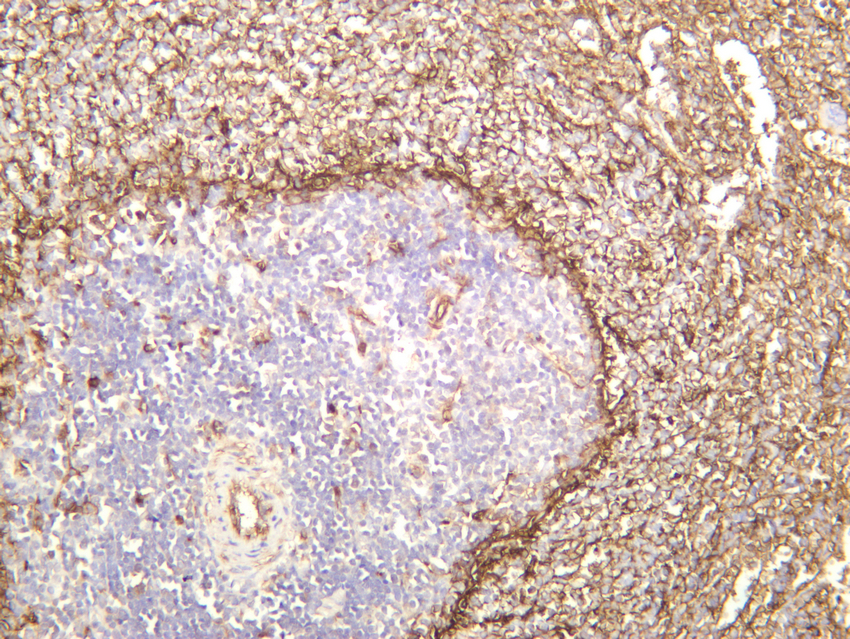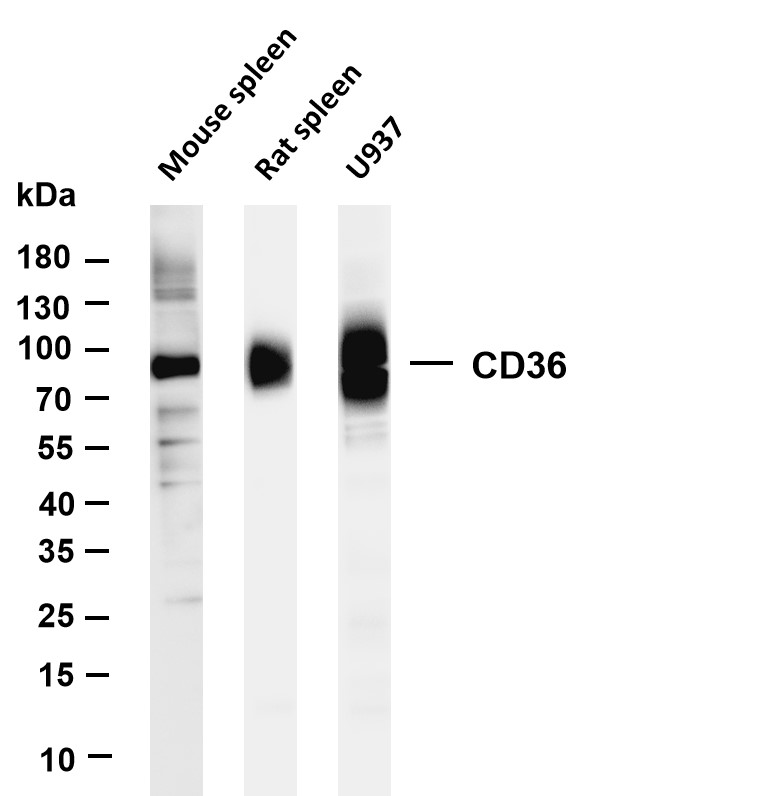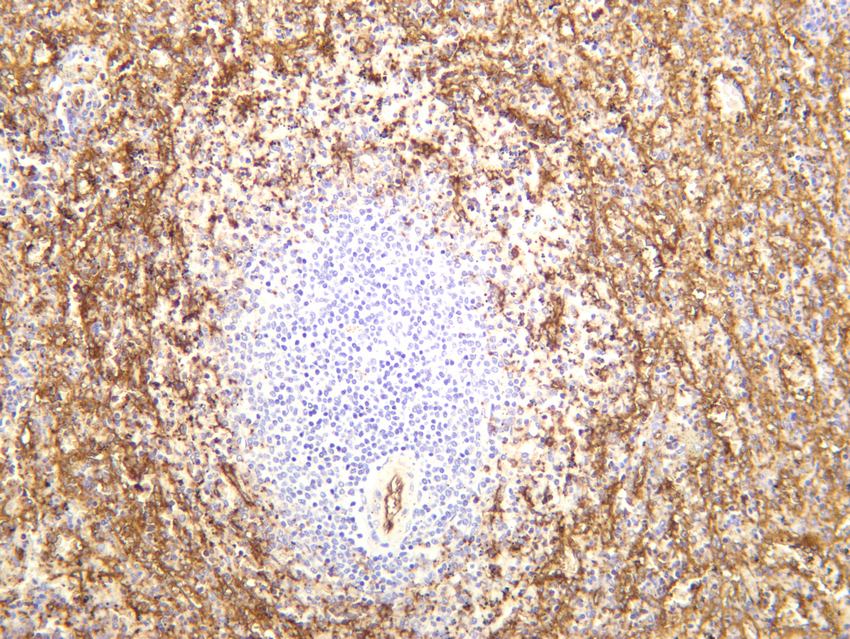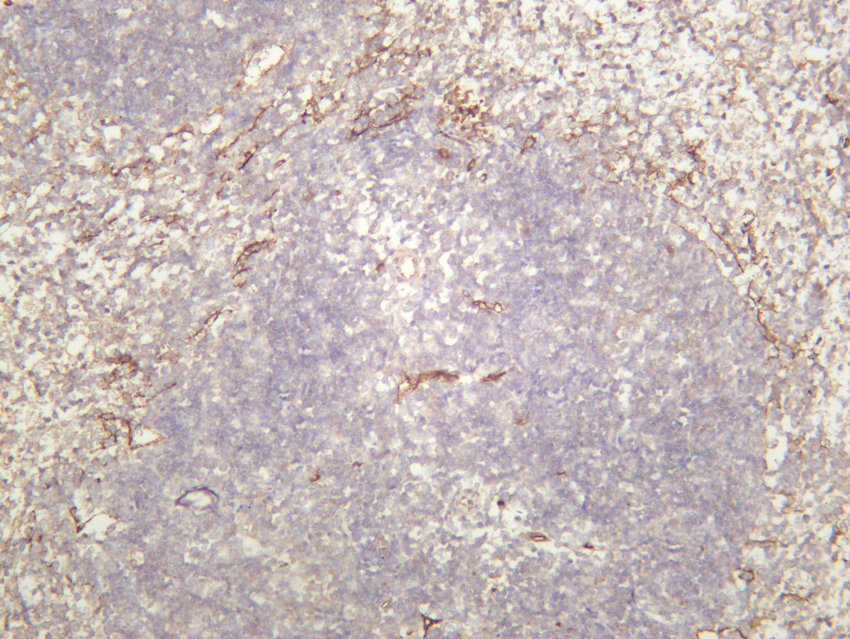CD36 (PT0434R) PT® Rabbit mAb
- Catalog No.:YM8274
- Applications:WB;IHC;IF;IP;ELISA
- Reactivity:Human; Mouse; Rat;
- Target:
- CD36
- Fields:
- >>PPAR signaling pathway;>>Phagosome;>>AMPK signaling pathway;>>ECM-receptor interaction;>>Hematopoietic cell lineage;>>Adipocytokine signaling pathway;>>Insulin resistance;>>Fat digestion and absorption;>>Cholesterol metabolism;>>Malaria;>>Diabetic cardiomyopathy;>>Lipid and atherosclerosis
- Gene Name:
- CD36
- Protein Name:
- Platelet glycoprotein 4
- Human Gene Id:
- 948
- Human Swiss Prot No:
- P16671
- Mouse Gene Id:
- 12491
- Mouse Swiss Prot No:
- Q08857
- Rat Swiss Prot No:
- Q07969
- Specificity:
- endogenous
- Formulation:
- PBS, 50% glycerol, 0.05% Proclin 300, 0.05%BSA
- Source:
- Monoclonal, rabbit, IgG, Kappa
- Dilution:
- IHC 1:1000-1:4000;WB 1:1000-1:5000;IF 1:200-1:1000;ELISA 1:5000-1:20000;IP 1:50-1:200;
- Purification:
- Protein A
- Storage Stability:
- -15°C to -25°C/1 year(Do not lower than -25°C)
- Other Name:
- CD36;GP3B;GP4;Platelet glycoprotein 4;Fatty acid translocase;FAT;Glycoprotein IIIb;GPIIIB;Leukocyte differentiation antigen CD36;PAS IV;PAS-4;Platelet collagen receptor;Platelet glycoprotein IV;GPIV;Thrombospondin receptor;CD36
- Molecular Weight(Da):
- 53kD
- Observed Band(KD):
- 90kD
- Background:
- The protein encoded by this gene is the fourth major glycoprotein of the platelet surface and serves as a receptor for thrombospondin in platelets and various cell lines. Since thrombospondins are widely distributed proteins involved in a variety of adhesive processes, this protein may have important functions as a cell adhesion molecule. It binds to collagen, thrombospondin, anionic phospholipids and oxidized LDL. It directly mediates cytoadherence of Plasmodium falciparum parasitized erythrocytes and it binds long chain fatty acids and may function in the transport and/or as a regulator of fatty acid transport. Mutations in this gene cause platelet glycoprotein deficiency. Multiple alternatively spliced transcript variants have been found for this gene. [provided by RefSeq, Feb 2014],
- Function:
- disease:Defects in CD36 are the cause of platelet glycoprotein IV deficiency [MIM:608404]; also known as CD36 deficiency. Platelet glycoprotein IV deficiency can be divided into 2 subgroups. The type I phenotype is characterized by platelets and monocytes/macrophages exhibiting complete CD36 deficiency. The type II phenotype lacks the surface expression of CD36 in platelets, but expression in monocytes/macrophages is near normal.,disease:Genetic variations in CD36 are associated with susceptibility to coronary heart disease type 7 (CHDS7) [MIM:610938].,function:Seems to have numerous potential physiological functions. Binds to collagen, thrombospondin, anionic phospholipids and oxidized LDL. May function as a cell adhesion molecule. Directly mediates cytoadherence of Plasmodium falciparum parasitized erythrocytes. Binds long chain fatty acids and may function in the transport and/or as a
- Subcellular Location:
- Membrane
- Expression:
- Adipocyte,Liver,Mammary gland,Milk,Placenta,Platelet,Skeletal muscle,
Dietary l-arginine supplementation of tilapia (Oreochromis niloticus) alters the microbial population and activates intestinal fatty acid oxidation. AMINO ACIDS Amino Acids. 2021 Jul;:1-13 WB Tilapia Intestine
Danlou Recipe promotes cholesterol efflux in macrophages RAW264.7 and reverses cholesterol transport in mice with hyperlipidemia induced by P407 BMC Complementary Medicine and Therapies Han Wenrun WB Mouse 1:1000 RAW264.7 cell
Microcystin-RR promote lipid accumulation through CD36 mediated signal pathway and fatty acid uptake in HepG2 cells ENVIRONMENTAL RESEARCH Wenjuan Jia WB Human 1:1000 HepG2 cell
Ribosomal modification protein rimK-like family member A activates betaine-homocysteine S-methyltransferase 1 to ameliorate hepatic steatosis Signal Transduction and Targeted Therapy Yan Han WB Mouse,Human liver tissue hepatocytes,HepG2 cell
Time-restricted feeding ameliorates non-alcoholic fatty liver disease through modulating hepatic nicotinamide metabolism via gut microbiota remodeling Gut Microbes Ruijia Feng WB Mouse,Human 1:1000 liver tissue HepG2 cell
- June 19-2018
- WESTERN IMMUNOBLOTTING PROTOCOL
- June 19-2018
- IMMUNOHISTOCHEMISTRY-PARAFFIN PROTOCOL
- June 19-2018
- IMMUNOFLUORESCENCE PROTOCOL
- September 08-2020
- FLOW-CYTOMEYRT-PROTOCOL
- May 20-2022
- Cell-Based ELISA│解您多样本WB检测之困扰
- July 13-2018
- CELL-BASED-ELISA-PROTOCOL-FOR-ACETYL-PROTEIN
- July 13-2018
- CELL-BASED-ELISA-PROTOCOL-FOR-PHOSPHO-PROTEIN
- July 13-2018
- Antibody-FAQs
- Products Images

- Rat spleen was stained with anti-CD36 (PT0434R) rabbit antibody

- Various whole cell lysates were separated by 4-20% SDS-PAGE, and the membrane was blotted with anti-CD36 (PT0434R) antibody. The HRP-conjugated Goat anti-Rabbit IgG(H + L) antibody was used to detect the antibody. Lane 1: Mouse spleen Lane 2: Rat spleen Lane 3: U937 Predicted band size: 53kDa Observed band size: 90kDa

- Human spleen was stained with anti-CD36 (PT0434R) rabbit antibody

- Mouse spleen was stained with anti-CD36 (PT0434R) rabbit antibody



